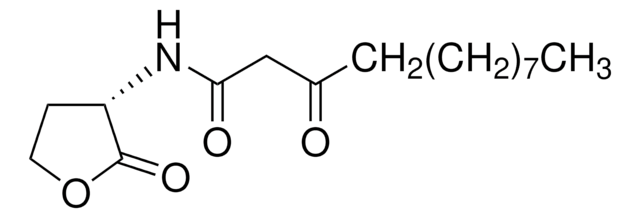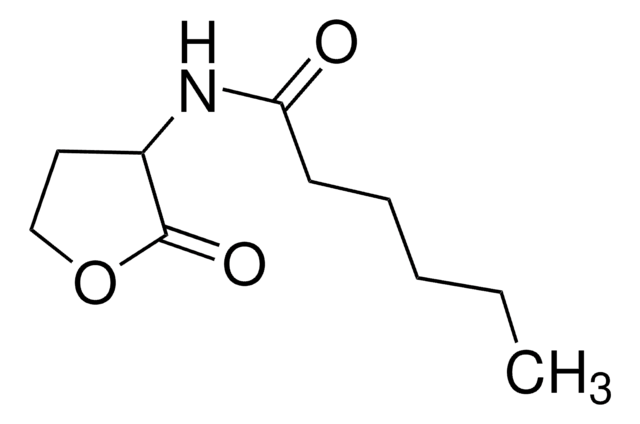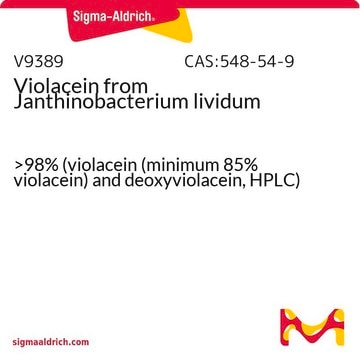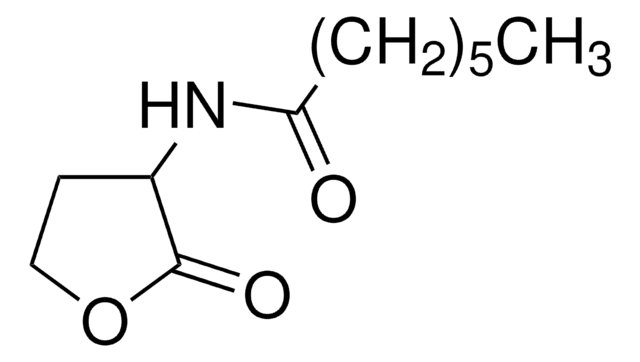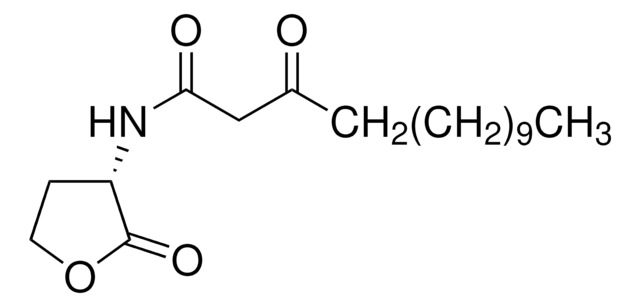51086
N-Heptanoyl-L-homoserine lactone
≥96% (HPLC)
Sinónimos:
N-[(3S)-Tetrahydro-2-oxo-3-furanyl]heptanamide, C7-HSL
About This Item
Productos recomendados
Nombre del producto
N-Heptanoyl-L-homoserine lactone, ≥96% (HPLC)
Nivel de calidad
Ensayo
≥96% (HPLC)
Formulario
powder or crystals
actividad óptica
[α]/D -29±3°, c = 0.2 in methanol
color
white
idoneidad
conforms to structure for Proton NMR spectrum
temp. de almacenamiento
−20°C
cadena SMILES
O=C1OCC[C@@H]1NC(CCCCCC)=O
InChI
1S/C11H19NO3/c1-2-3-4-5-6-10(13)12-9-7-8-15-11(9)14/h9H,2-8H2,1H3,(H,12,13)/t9-/m0/s1
Clave InChI
FTMZLSDESAOPSZ-VIFPVBQESA-N
Acciones bioquímicas o fisiológicas
Código de clase de almacenamiento
10 - Combustible liquids
Clase de riesgo para el agua (WGK)
WGK 3
Punto de inflamabilidad (°F)
Not applicable
Punto de inflamabilidad (°C)
Not applicable
Elija entre una de las versiones más recientes:
¿Ya tiene este producto?
Encuentre la documentación para los productos que ha comprado recientemente en la Biblioteca de documentos.
Los clientes también vieron
Nuestro equipo de científicos tiene experiencia en todas las áreas de investigación: Ciencias de la vida, Ciencia de los materiales, Síntesis química, Cromatografía, Analítica y muchas otras.
Póngase en contacto con el Servicio técnico



